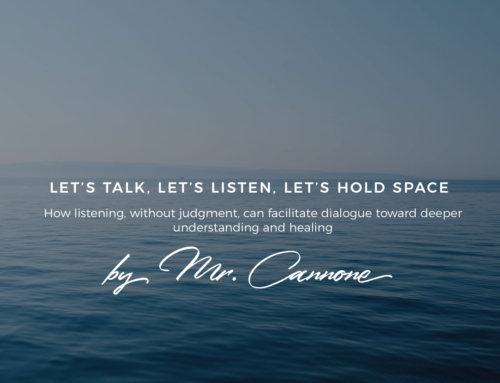Here we are again, on the brink of a new school year and for many teachers, this means that preparations are well underway for a classroom transformation of sorts. Although I am not returning to a classroom this year, I was once there – rushing frantically to the dollar store for bins, the local teacher-decor store for chevron borders, and Ikea for classroom furniture. If you’re out and about preparing in this same way – STOP!
Social media-reveals of cozy classroom spaces, have inspired many teachers to buy borders and pre-packaged displays with the hopes of creating a vibrant, welcoming space for students. While the intentions are great, here is how you can save your money and time to co-create a space for and most importantly with your students that will cost you next to nothing and cultivate a sense of community:
1. PEDAGOGY
According to the Capacity Building Series document, “The Third Teacher”, “It is both an art and a science to design (as opposed to decorate) a learning environment that responds to our ultimate goal as educators – to develop independent and rigorous thought.” This document, and one that I highly suggest all educators read, emphasizes the importance of collaborative work and inquiry in gathering spaces for small group and whole discussions. The document also includes suggestions for the organization of purposeful materials and resources for student learning. An article by Stephen Merrill on the research behind flexible seating, said it best – “Changing the layout of your classroom will almost certainly have no impact at all—if you don’t change your teaching too.”
2. STUDENT VOICE and CHOICE
The classroom space should be designed for the students and by the students. At the beginning of the school year, Zelia Capitao-Tavares, a teacher with the TDSB, allows her students to design the space and arrangement of furniture, on a map, in the form of a math problem.
In a Library AQ that I completed, a school librarian provided the example of sending out a Google Forms survey for all stakeholders, including students, to weigh in on the design of a Learning Commons that was responsive to their needs. The results of this survey reflected the design of the Learning Commons according to the interests and needs of the main stakeholders for whom this space was meant for.
Open-titled bulletin boards – an Inquiry wall or audit trail where students can post their questions according to a concept discussed in class, a wall where students can post their proudest work, and a wall where students can select from a variety of tools to demonstrate their understanding – are just a few examples of displays that invite the students to contribute and have ownership over their learning. To learn more about audit trails, click here.
As many teachers know, the start of the school year ushers in conversation on classroom norms, routines, or attributes of success. Rather than purchasing or creating pre-made posters with rules/expectations related to these norms, inviting students to create and co-construct classroom expectations will allow them to feel valued and as a result, students will be more likely to follow the expectations that they had a say in creating.
3. SOCIO-CULTURAL IMPLICATIONS TO CONSIDER
In an article entitled, “No, you don’t need a classroom transformation”, teacher and education-writer, Paul Emerich, writes – “When certain teachers leverage their financial privilege and over-decorate their classrooms, it inadvertently creates a hierarchy between teachers. Suddenly, one of the teachers becomes more desirable than the others, and in some cases, students might even ask the teachers why one classroom gets the bells and whistles, while their classroom doesn’t. This puts the teacher in an uncomfortable and unfair position, having to come up with an explanation for why they are not able to provide that same experience for their students.”
After reading this, my eyes were wide open and I came to the realization that I was once that teacher who went out to Ikea to purchase tables and stools for my students with the best of intentions, of course. Although I was aware of the pedagogy on learning environments and the “Third Teacher”, I never gave much thought to how other students and teachers would be affected by my decision to set up the classroom in this way.
Similarly, I never gave much thought to the inequity posed when borrowing classroom furniture within my school (larger desks for flexible seating) to create a desired learning environment, leaving other teachers with the inability to do the same for their students.
Although I will not be in a classroom this year, may this knowledge awaken in you (as it did for me) a need to reflect critically on the choices we make when setting up our learning environments for the new school year. As teachers, our goals are always honourable – to provide the best learning and learning environment possible for our students. This begins once we get to know our students – their identities, interests, learning needs, and how they wish to see a space that they will be the primary users of. From there, we can begin co-planning the direction and set-up of these shared spaces, which will undoubtedly evolve in response to what students learn and how students choose to share their learning throughout the year.






